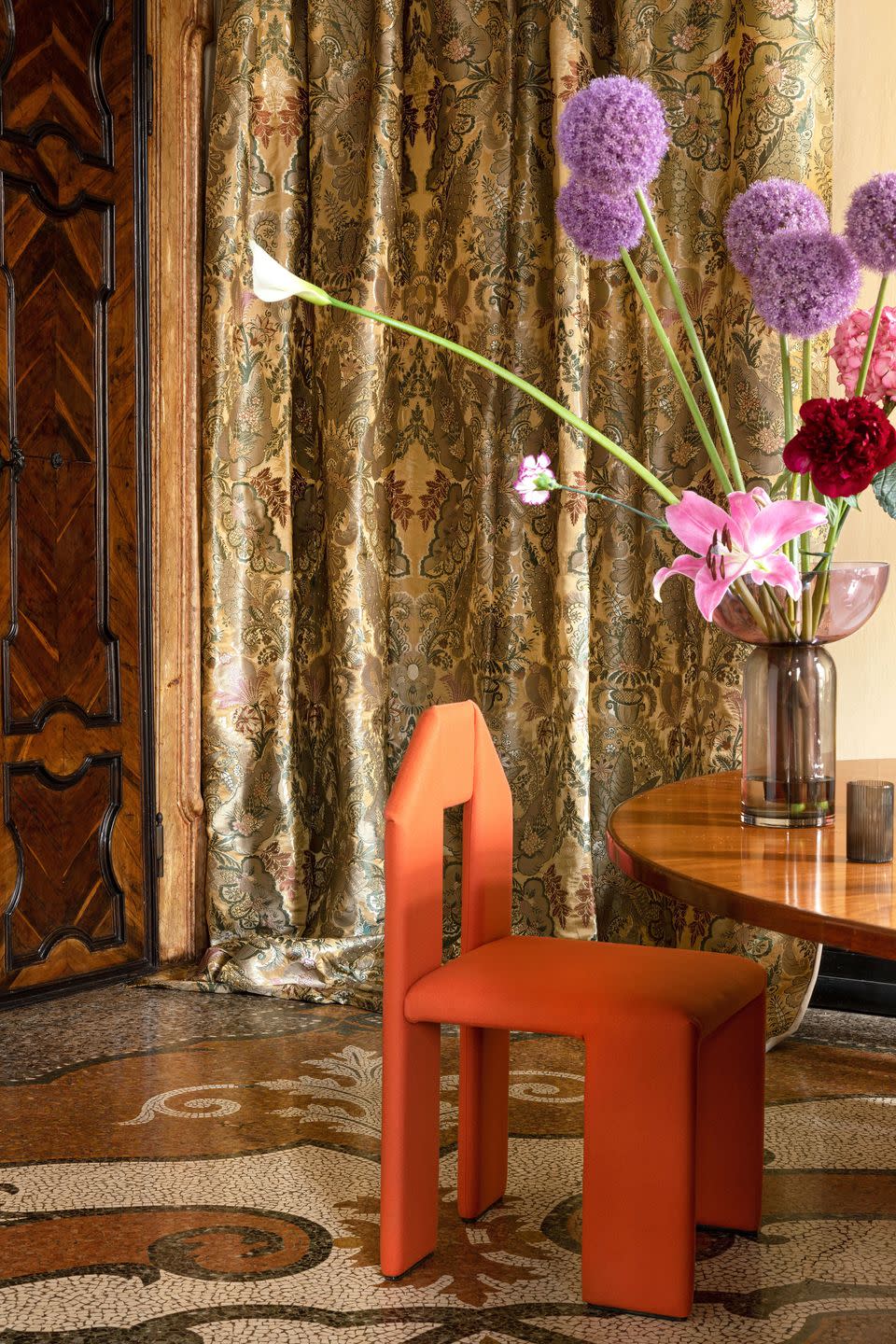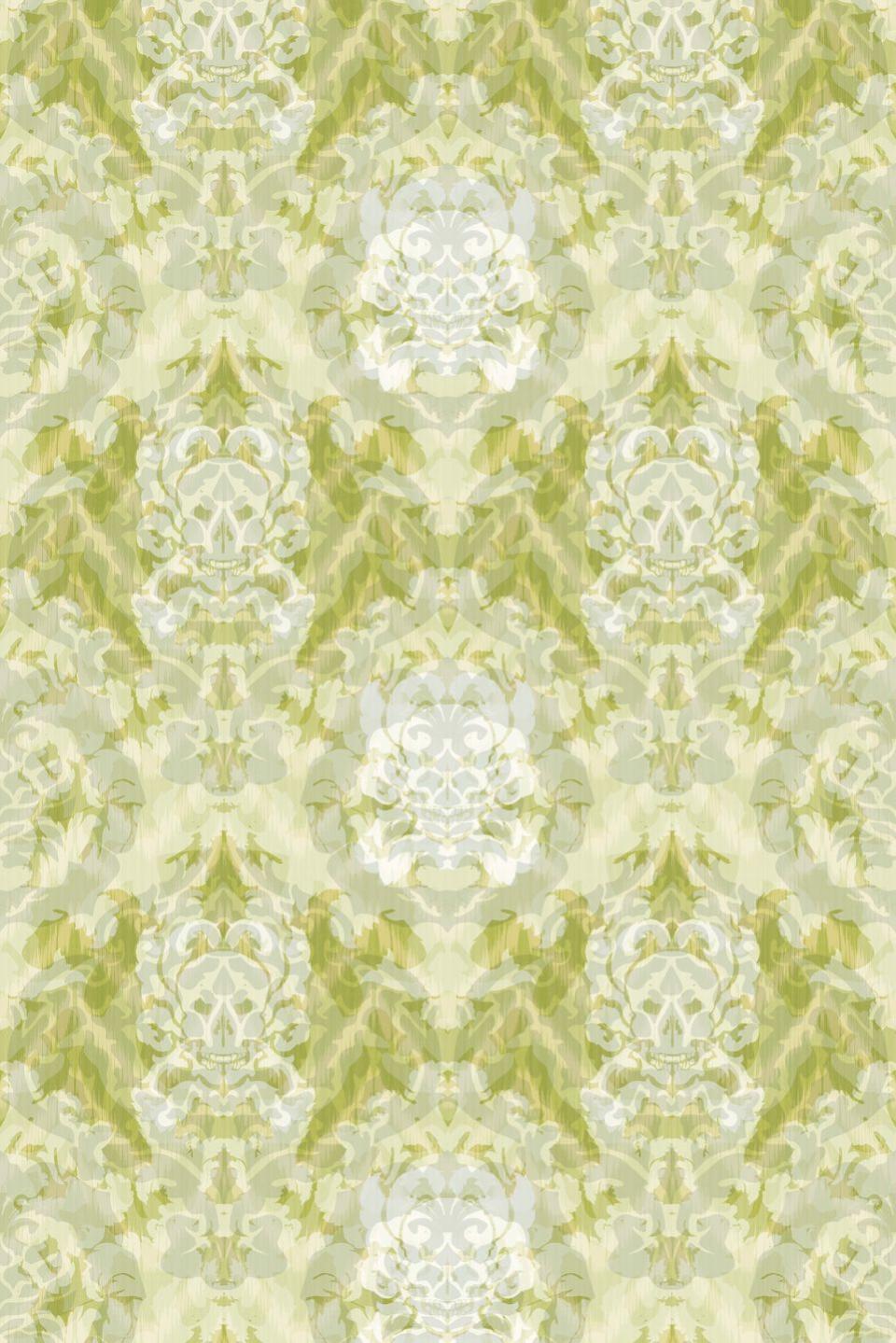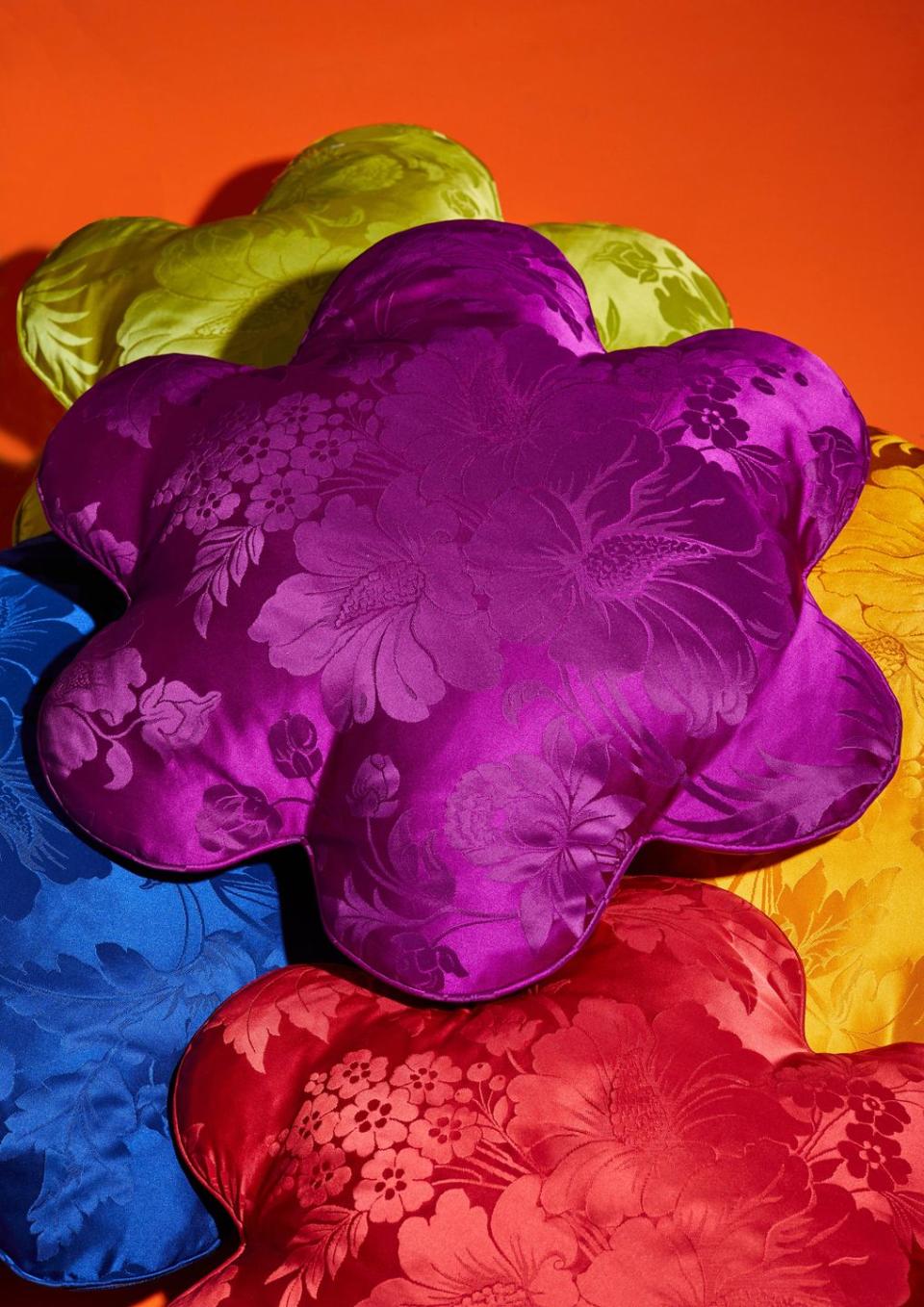How much do you know about the history of damask?

Henry VIII is better known for the inconstancy of his loves than for their endurance, but one thing he did remain devoted to throughout his life was damask. It crops up in many of his portraits – his clothes fashioned from or slashed with it. A sweep of rich, leafy green damask forms the background of twin paintings of the king and Katherine of Aragon completed around 1520.
It was used to bind a treasured book that had once belonged to his father; and inventories of his household recorded stockpiles of textiles, including cloth of gold, damasks and velvet, valued at more than £50,000.

Then, as now, damask was a byword for magnificence and luxury. This textile was first woven in China around 300 BCE and was reserved for nobility and royalty. Originally always made from silk, over time damask came to refer to the design. Like many fabrics, definitions vary, but generally it is reversible, tightly woven with a variety of techniques to create symmetrical patterns often inspired by the natural world.
The tightness of the weave is significant, because it makes the cloth thick and resistant to wear, with designs often including satin weave, which has a glossy, lustrous appearance. Silk Road traders loved it, and a remnant of this globetrotting past can be divined from the name, which comes from the Syrian city Damascus, famed for the quality of its textiles.

Damask’s fortunes changed dramatically in 1801, when the Frenchman Joseph-Marie Jacquard invented the Jacquard loom. Previously, each bolt had to be painstakingly designed and then woven by hand, but the loom (programmed using a system of punched cards) made weaving complex textiles easier and, crucially, cheaper.

Unsurprisingly, this increased damask’s popularity in the 19th century, in both fashion and interiors. Since then, there have been flurries of mass-market enthusiasm: remember the deluge of flocked damask wallpapers and bed linens during the 1990s?
Now, it is being reinterpreted for a new generation. Lovers of heritage designs scarcely need persuading to buy into a textile with so peerless a pedigree. Others are being offered twists on the theme. Perhaps most adventurously, Timorous Beasties has played with the pattern to create textiles and wallpapers that include skull motifs and Rorschach-inspired ink blots.

Rubelli, meanwhile, anticipated renewed interest by unveiling a standalone damask collection. Some patterns – like ‘Flirt’ and ‘Mirage’ – will appeal to traditionalists unafraid of damask’s inherent maximalism.
‘Puzzle’ is softer, aimed at those who need a little more persuasion to dip their toe into the trend; at the other end of the spectrum is ‘Pop’, available in eye-watering colour combinations including copper and turquoise or candy pink and lemon. King Henry, always keen to be the centre of attention, would certainly have approved.


